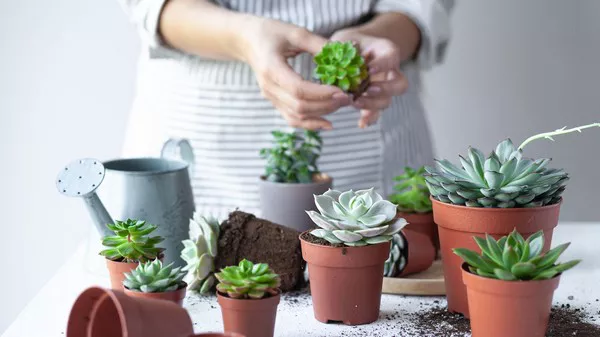Succulents, with their striking forms and resilience, have become increasingly popular in both indoor and outdoor gardening. One common concern when it comes to planting succulents is the absence of drainage holes in certain containers. While proper drainage is crucial for the health of succulent plants, it is possible to create a suitable environment for them even without drainage holes. This article serves as a comprehensive guide to planting succulents without drainage holes, providing insights, tips, and techniques to ensure their successful growth in challenging conditions.
Understanding the Importance of Drainage
Drainage is vital for succulent plants as it allows excess water to escape, preventing waterlogged roots and the onset of rot. When planting succulents without drainage holes, it is essential to take extra precautions to avoid overwatering and create an environment that mimics the natural conditions these plants thrive in.
Selecting Suitable Containers
When choosing containers without drainage holes, opt for those made of porous materials that allow air and water to circulate. Terracotta pots are an excellent choice as they are breathable and can absorb excess moisture. Alternatively, containers made of ceramic or unglazed clay can also provide better airflow compared to non-porous materials like glass or plastic. It is important to note that while containers without drainage holes can be used, they require careful attention to prevent water accumulation.
Layering the Container for Optimal Drainage
To create a makeshift drainage system, layering the bottom of the container is crucial. Start by placing a layer of small rocks or pebbles, approximately 1 to 2 inches thick, at the bottom. This layer acts as a reservoir, allowing water to collect without saturating the soil. On top of the rocks, add a layer of activated charcoal or horticultural charcoal. The charcoal helps absorb excess moisture, prevents odors, and reduces the risk of fungal growth. Finally, add a layer of well-draining succulent soil mix, leaving sufficient space for planting.
Choosing the Right Soil Mix
Succulent plants thrive in well-draining soil that allows excess water to flow through easily. To create a suitable soil mix for planting succulents without drainage holes, combine standard potting soil with coarse sand or perlite. Aim for a mixture that is well-aerated, allowing water to pass through quickly. A recommended ratio is 2 parts potting soil to 1 part sand or perlite. This mix helps prevent water accumulation and creates a favorable environment for succulent root growth.
Watering with Care
Watering succulents without drainage holes requires a delicate balance to avoid overwatering. The key is to water sparingly and monitor the moisture levels of the soil. Before watering, check the soil’s moisture content by inserting a finger or a moisture meter into the soil. Only water when the top inch of soil feels dry. When watering, apply water slowly and evenly, ensuring that it is absorbed by the soil rather than pooling at the bottom of the container. Be cautious not to saturate the soil excessively, as this can lead to root rot and other issues.
Adjusting Watering Frequency
The watering frequency for succulents without drainage holes may differ from those planted in containers with proper drainage. Since water takes longer to evaporate in containers without drainage, succulents planted in these conditions require less frequent watering. Monitor the soil’s moisture levels regularly and adjust the watering schedule accordingly. In general, it is better to underwater than overwater succulents, as they are more tolerant of drought than excessive moisture.
Providing Adequate Air Circulation
Proper air circulation is crucial for succulent plants, even in containers without drainage holes. Place the planted container in a location that receives ample airflow, avoiding areas with stagnant air or high humidity. This helps prevent moisture buildup and promotes healthy plant growth. Additionally, avoid crowding succulents together in tight arrangements, as this can impede air circulation and increase the risk of fungal diseases.
Recognizing Signs of Overwatering
Despite taking precautions, succulents planted without drainage holes may still experience issues related to excess moisture. It is important to recognize the signs of overwatering, such as yellowing or wilting leaves, soft or mushy stems, or the presence of mold or fungus on the soil surface. If any of these symptoms occur, reduce watering and ensure that the soil has adequate time to dry out before the next watering session. If necessary, repot the succulent into a container with drainage holes to restore its health.
Conclusion
Planting succulents without drainage holes may present a challenge, but with the right techniques and care, these resilient plants can still thrive. By understanding the importance of drainage, selecting suitable containers, layering the container for optimal drainage, using well-draining soil mix, watering with care, and providing adequate air circulation, you can create a conducive environment for the growth of healthy and vibrant succulents. Remember to monitor moisture levels, adjust watering frequency, and be mindful of signs of overwatering. With proper attention and a touch of creativity, you can cultivate a flourishing succulent garden even in containers without drainage holes.


